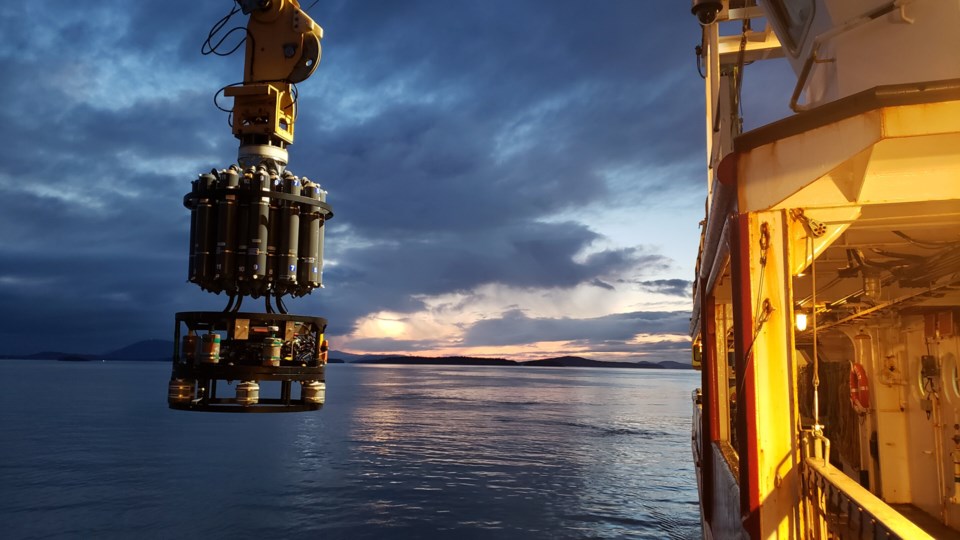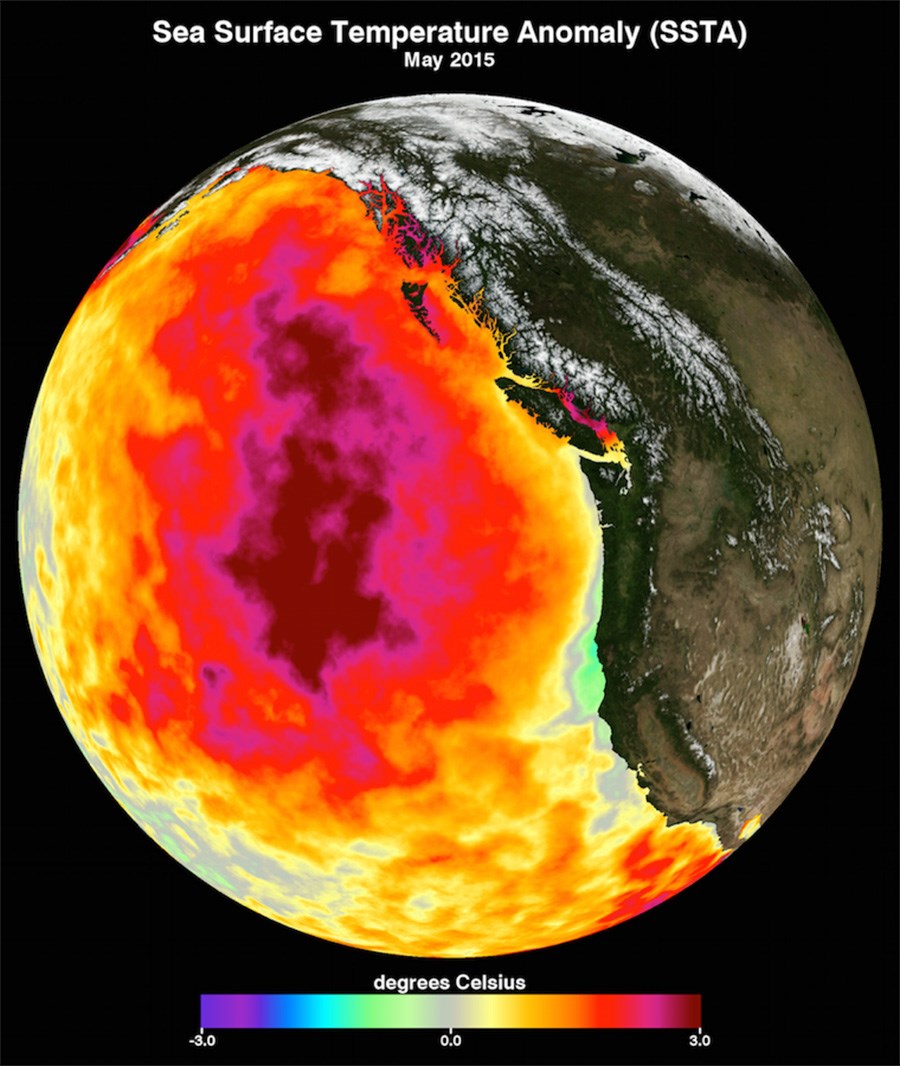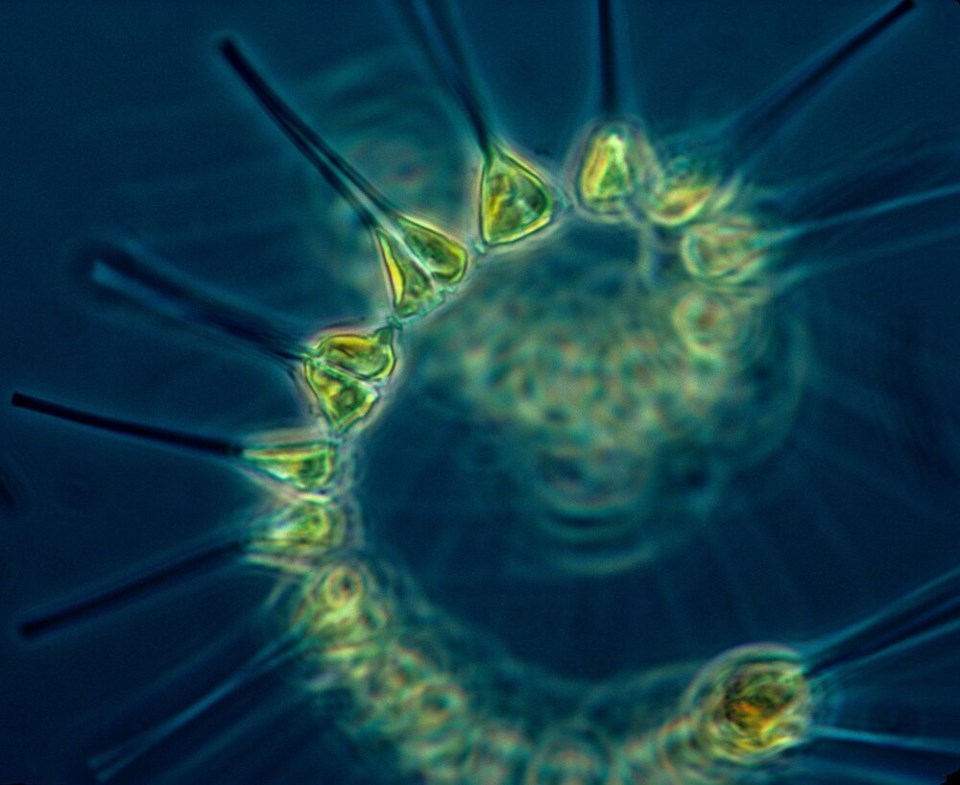'The Blob' threatens carbon-sucking power of Pacific Ocean: study

A multi-year ocean heat wave known as “the Blob” may have temporarily disrupted the biological pump that cycles carbon dioxide deep into the Pacific Ocean for up to thousands of years at a time, a new study has found.
The study brought together researchers from the University of British Columbia, the Hakai Institute and DFO’s Institute of Ocean Sciences. Together, they analyzed 271 biological samples collected along a 1,425-kilometre path stretching from the south coast of Vancouver Island into the middle of the Pacific Ocean.
The results, published last week in the journal Communications Biology, showed significant changes in microbial species living on the ocean’s surface before, during and after the Blob first appeared in 2013.
That change, say the researchers, could signal a re-ordering of the tiniest life at sea — microbes and plankton that act as one of the lungs of the global climate system, releasing but ultimately scrubbing more carbon dioxide out of the atmosphere every year.
“The Blob is one of the biggest heat waves we have on record in history... There's only going to be more of them as we go on with time because of climate change,” says lead author Sachia Traving, a marine microbiologist now at a deep ocean institute at the University of Denmark.
“It could push the bacterial communities into a change where the change is permanent... It won’t be able to recover back to the original state.”

HOW DOES THE ‘BIOLOGICAL PUMP’ WORK?
The life-or-death balance known as the ocean’s “biological pump” begins near the sea surface. As miniature photo-synthesizers, phytoplankton sit at the bottom of the food chain, using the sun’s energy to convert atmospheric carbon dioxide into solid organic material.
They are a key part of an ocean system that is thought to scrub up to 30 per cent of human-produced greenhouse gas emissions from the atmosphere every year.
Some phytoplankton feed krill, shrimp and jellyfish, which in turn feed bigger fish, eventually making it into the mouths of sea life like sharks and dolphins. But not everything in the sea is eaten alive, and like on land, the dead eventually offer a meal to the tiniest of creatures.
Enter microbic bacteria and archaea. Together, they act as garburators for rotting sea life, breaking down dead organic matter like whale poop, dead carcasses, seaweed — and plankton.
Microbe populations latch on to this dead organic matter and begin to break it down. Whatever gets metabolized near the sea’s surface gets converted into carbon dioxide, eventually bleeding back into the atmosphere. Under normal conditions, much of the organic matter sinks deep into the ocean, their dead bodies taking the carbon to the ocean floor where it can stay for thousands of years.
“That’s really great because that makes the ocean this huge carbon sink that actually stores a significant amount of carbon dioxide in organic form,” says Traving.

OCEAN HEAT WAVES THREATEN A FINE BALANCE
Scientists have generally assumed the role microbes play remains stable over time, mostly because they account for a huge diversity of species and population sizes.
But research has increasingly found warmer sea surface temperature can throw that stability out of whack, according to Traving.
When the Blob spread in 2015 — one of the biggest ocean heat waves in modern times — sea surface temperatures spiked between 1 and 4 C, extending as deep as 200 metres.
As nutrient levels, including chlorophyll, dropped, the size of phytoplankton cells decreased. The fear, say scientists, is that the trend toward smaller phytoplankton means less carbon getting scrubbed out of the atmosphere and buried deep in the ocean.
That was bad enough, says Traving. To make matters worse, the research team found warmer seas offered prime conditions for several new species of bacteria, many of them who live independently of phytoplankton. Without latching on to the plankton, they remain at the surface, tiny engines thriving as they burn through dead matter.
“If (microbes) are very active and they process a lot of organic material, they will also respire a lot of the carbon back, which will eventually end up in the atmosphere as carbon dioxide,” says Traving.
Traving says more research needs to be done to understand the scale of the phenomenon. What is certain, is that the climate crisis is expected to lead to more Blob-like heat waves all over the world’s oceans. It’s not a stretch, says Traving, to say that could push these ocean-roaming bacteria into a permanent change.
“Maybe the Blob itself wasn't really a tipping point as a stand-alone event. But if we get more of those and closer together in the future, th
No comments:
Post a Comment